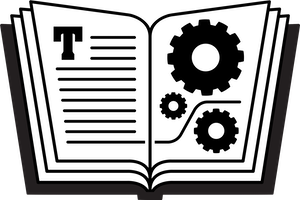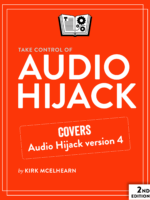We spend our lives plugging stuff into our computers, smartphones, tablets, and other hardware. Why is it so hard to make it all work as we expect? Glenn Fleishman knows the answer to this: standards don’t develop in lock step, and whenever anything is out of sync, we wind up with frustration. He also knows the questions! As a writer about all things Apple for decades, he has used multiple generations of interface and connection standards, and he reads hundreds of questions a months from readers wrestling with their gear.
In Take Control of Untangling Connections, Glenn puts power (and video and data and more) back in your hands by helping you cut through cable clutter and confusion and find the right plug for the right jack—and the right cable.
Glenn posted an 11-minute video on YouTube about cables and connectors to answer some common questions, and it also serves as a preview of the book:
The book covers data networking with USB, Thunderbolt, and Ethernet; audio and video over DisplayPort, HDMI, and USB-C; and all the ins and outs of recognizing ports, researching your requirements, and finding or buying the right cables, adapters, and converters. There’s even a chapter on physical decluttering: how to organize your cables in your home and office.
You’ll learn the answers to questions like:
- How do I ensure I have the fastest connection between any combination of USB and Thunderbolt standards?
- What’s the fastest computer-to-computer connection?
- What’s new with the latest standards—USB4 2.0 (80 Gbps), Thunderbolt 5, and DisplayPort 2.1?
- Why is my USB-C cable handling data only at 480 Mbps?
- How can I make sure my 1080p, 4K, 5K, 6K, or 8K display can show its maximum resolution?
- Why can’t I connect more displays to my computer?
- How do I know how many watts a given port can offer a device I plug into it?
- I plugged my laptop (or tablet) into a USB-C port—it’s only charging at a trickle, but the port says it should offer up to 100 W. How can I fix this?
- What’s the fastest generally available computer-to-Ethernet connection?
- I have an unmarked cable with USB-C on one end and a Type-A connector on the other. How fast can it transmit data?
- This cable isn’t marked, but it has USB-C at both ends. What kind of cable is it?
- How can I test USB-C and USB Type-A cables to find out what they’re capable of?
- What’s the latest on USB-C’s march towards mandatory mobile device support?
- What sort of adapter, dock, hub, or switch might I need to connect this thing to those things?
Glenn Fleishman is a veteran technology writer who has contributed to dozens of publications across his career, including Macworld, Fast Company, and Increment. He has also written dozens of editions of books in the Take Control series. He spent 2019 and 2020 building 100 tiny type museums full of real printing artifacts. Glenn lives in Seattle with his wife and two children.
What’s New in the Second Edition
While standards settled down a lot in the last few years following the introduction of the USB-C connector type in 2015 and its broad spread starting in 2020, and Thunderbolt 3 and 4 around the same period, a sudden flood of activity occurred after I wrote the first edition of this book. This update reflects new standards, new options, and new affordable cable testing equipment.
This new edition is updated to include new sections on the following, as well as updates through the book to reflect them:
- USB4 80 Gbps: The trade group that manages the USB format announced a new variant on USB4 that allows 80 Gbps of data and video in late 2022. See “USB Capabilities” and throughout.
- Thunderbolt 5: Intel, which controls the Thunderbolt standard, announced the details for Thunderbolt 5, an evolution of that specification, in September 2023. See “Thunderbolt Capabilities” and throughout.
- European Union USB-C mandates: The European Union adopted a requirement for mobile phone, tables, and cameras sold within the broad region to have a USB-C charging port; California followed suit. See “Mandates for USB-C for Mobile Devices.”
- iPhone adopts USB-C: Before they would be forced to under European Union and California law, Apple shifted from their proprietary Lightning connector to USB-C on the iPhone 15 series of phones introduced in 2023. See “Mandates for USB-C for Mobile Devices.”
- Advances in DisplayPort: DisplayPort continues to adopt improvements for displays with ever greater numbers of pixels and color depth. DisplayPort 2.1, introduced in late 2022, has a lot of technical improvements, including super high refresh rates, potential support for 16K monitors, and longer cables than previous standards. See “DisplayPort and HDMI Capabilities.”
- Better cable labels: Some companies have fought against the trend of unlabeled cable heads or using the sometimes hard-to-decipher logo standards. See “A Trend Towards More Detailed Labeling.”
- New testing devices: Until recently, your options were limited for trying to figure out what standards a USB-C cable or a USB-C to Type-A cable encompassed. Through colleagues, I found an inexpensive testing device that might save you a lot of time if you buy and handle many cables. See “Testing USB and Thunderbolt.”
Posted by Joe Kissell on April 22, 2022
Glenn Fleishman joined host Chuck Joiner on MacVoices about his book Take Control of Untangling Connections.
In part one, Glenn offers tips on figuring out what cable is right for what task and how to identify cables.
In part two, Glenn continues the discussion with thoughts on USB-C, Thunderbolt, and more.










Reviews
There are no reviews yet.